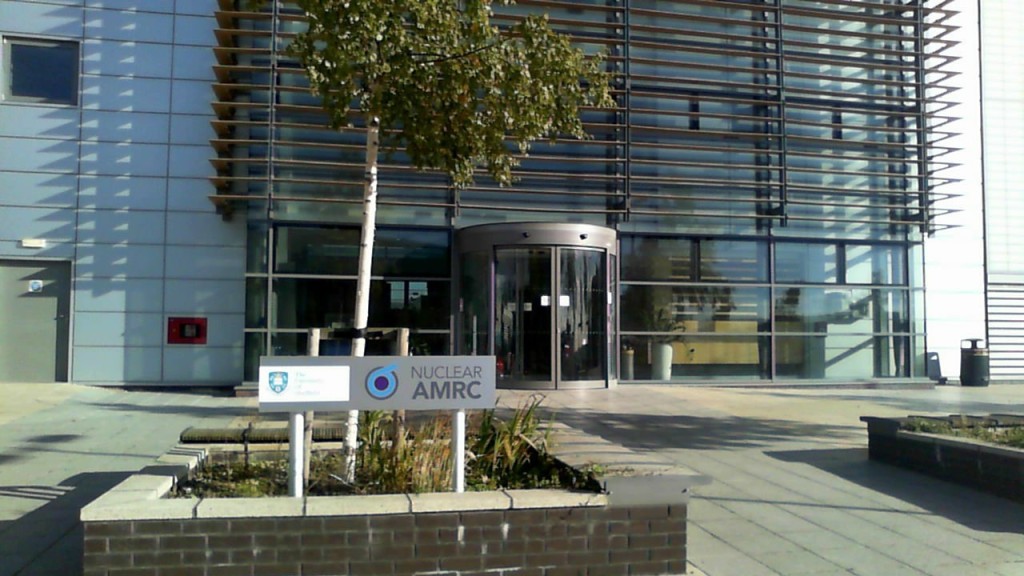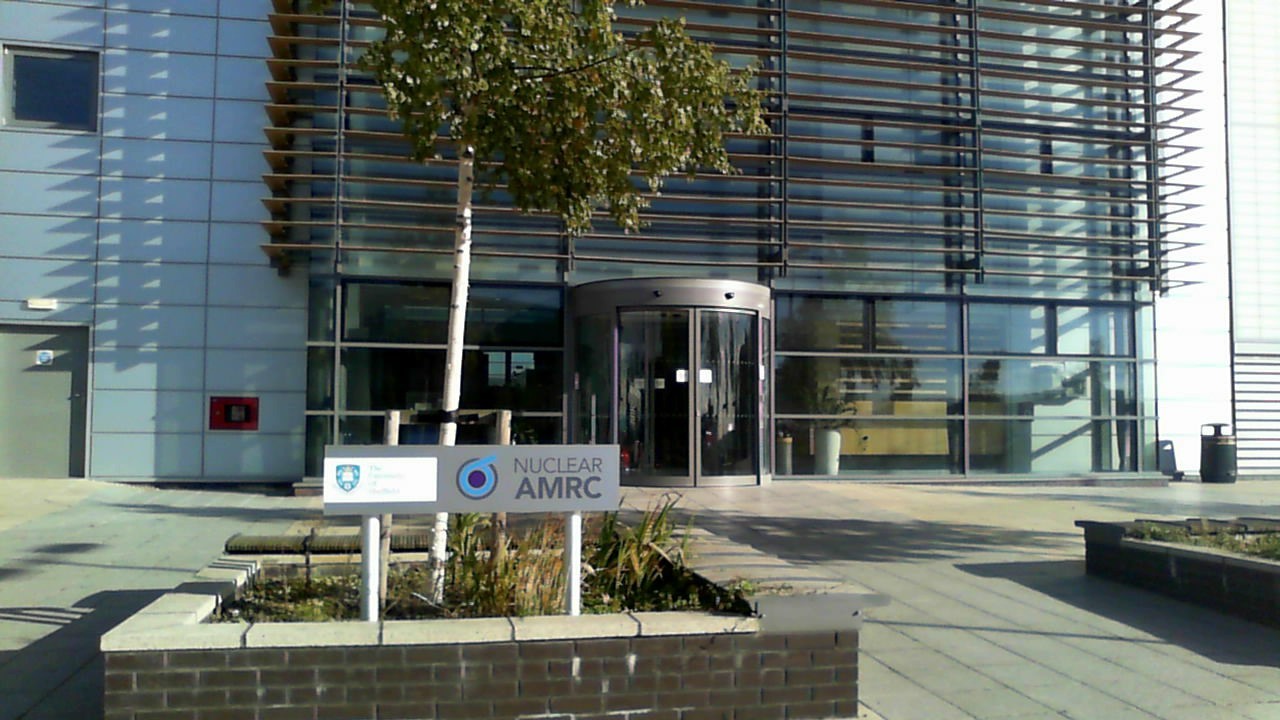 The latest meeting of our sector-specific theme group was hosted at the world-leading Nuclear Advanced Manufacturing Research Centre at Rotherham on September 23rd. Our hosts are the world’s biggest specialist R&D facility of its kind, and they specialise in working with the UK supply chain to improve their performance and readiness to supply to the nuclear sector. They are part of the High Value Manufacturing catapult which receives government funding, and focus on bridging the gap between research and full commercial exploitation. The main university partners are Sheffield University with our friends from Manchester University, major industry funders include Rolls Royce. We are incredibly grateful for their generous hospitality and for providing a guided tour of the factory facility.
The latest meeting of our sector-specific theme group was hosted at the world-leading Nuclear Advanced Manufacturing Research Centre at Rotherham on September 23rd. Our hosts are the world’s biggest specialist R&D facility of its kind, and they specialise in working with the UK supply chain to improve their performance and readiness to supply to the nuclear sector. They are part of the High Value Manufacturing catapult which receives government funding, and focus on bridging the gap between research and full commercial exploitation. The main university partners are Sheffield University with our friends from Manchester University, major industry funders include Rolls Royce. We are incredibly grateful for their generous hospitality and for providing a guided tour of the factory facility.
Our Nuclear theme group was formed in 2008, and it has two objectives: 1) to provide market intelligence to those who see themselves as in the construction sector about what business opportunities and challenges may be available in the nuclear sector, and 2) to transfer best practice TO and FROM our sector to the nuclear sector, many parts of which still think of construction in terms of the last time the UK built a nuclear power station, ie the mid-1980s at Sizewell B.
Now we like to think we are good at bringing together interesting speakers with an audience of members hungry for knowledge and ideas, but at this meeting we surpassed ourselves in terms of the synergies of themes identified. As well as NAMRC we heard from Rolls Royce on the Nuclear Industry Council’s supply chain readiness group, 2 SMEs on the NDA’s supply chain readiness group, and the National Nuclear Laboratory on robotics. Other contributors included the skills bodies NSAN and ECTIB. The meeting featured great presentations, which triggered several themes for further discussion. One golden thread was about predictability of workload, where the narrative seems to me to go something like this (don’t blame any of the speakers!):
As in other infrastructure sectors, for the best part of a decade the nuclear sector has sought to make visible its forward pipeline, in both newbuild, operation and decommissioning, so that its supply chains, government, training and skills bodies and others can gear up accordingly for what looks like a huge boom in workload. The NDA sought to bring forward some of its projects as a result so that it could benefit from a smoother overall workload for the sector and not be hit by inflationary pressures caused by skills and materials shortages. However the sector now starts to look like a cautionary tale for those who believe that all we need is a visible forward pipeline and the industry will gear up accordingly. Imagine a sector where:
- the 3 major newbuild clients are from France and Japan, with strong track records of construction projects in their own country
- they will all compete with each other to sell their end product of electricity, so trying to get them to collaborate is tough and any suggestion of a ‘Team UK’ approach to the supply chain faces big hurdles
- add in the Chinese, who agree to invest in one of the projects provided they can have a stake in the supply chain and will expect greater proportions of future projects
- the UK government decides to change the governance and management of the major decommissioning client (Magnox) and the fuel reprocessing client (Sellafield), delaying major programmes of work by at least months
- these same bodies face government budget cuts in the Spending Review, given the austerity era in which we still reside
- the skills and qualifications required for the supply chain to be fit for purpose in the sector are stringent and often much higher than in other construction-related sectors
- it isn’t obvious which parts of the supply chain the UK wants to be good at, and actually can be – or which parts will be sewn up by the French, Japanese or Chinese supply chains
- other construction and infrastructure sectors are recovering and there is plenty of work around in these less specialised and easier-to-enter sectors, and in more convenient geographical locations (eg major cities rather than remote seaside locations).
Welcome to nuclear. Transparency of pipeline YES. We know this work will happen, it has to otherwise the lights will go out and nuclear waste wont be dealt with. Predictability of pipeline? NO! You would find it pretty hard to create greater uncertainty. The result of a near-perfect storm is that, whether you are a R&D facility (NAMRC), a tier 1-2 supplier (Rolls Royce), a Tier 3 contractor waiting for the green light to deploy your new heavy plant and equipment (Kier), a training body (ECITB or NSAN), or an SME being encouraged to gear up, you could be forgiven for exasperation and deciding to deploy your resources elsewhere. Result? No ‘Team GB’ for nuclear, capable of competing internationally, no high value skilled jobs at home, no foreign earnings. And an infrastructure increasingly in the hands and at the commercial mercy of overseas businesses and governments.
One footnote to the meeting. This group typically has 25-40 people participating in meetings, this time perhaps because we changed the date at a few weeks’ notice, only 12 attended (and one was the group’s chairman connecting via skype!). Absentees missed a great meeting, and I can only hope that Dec 10th is in your diary, when the main speakers will come from ITER (the Fusion project), Horizon and NuGen, the two Japanese-led newbuild projects. I pledge that we will NOT move this date!

